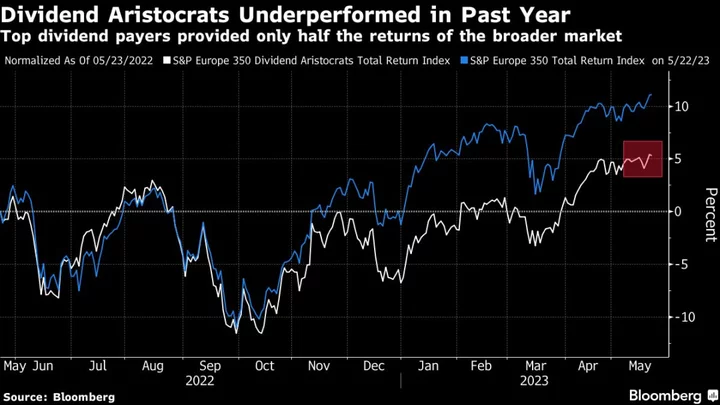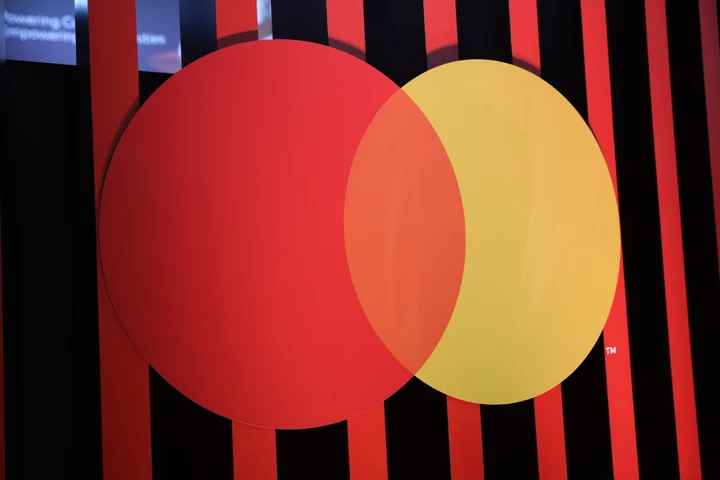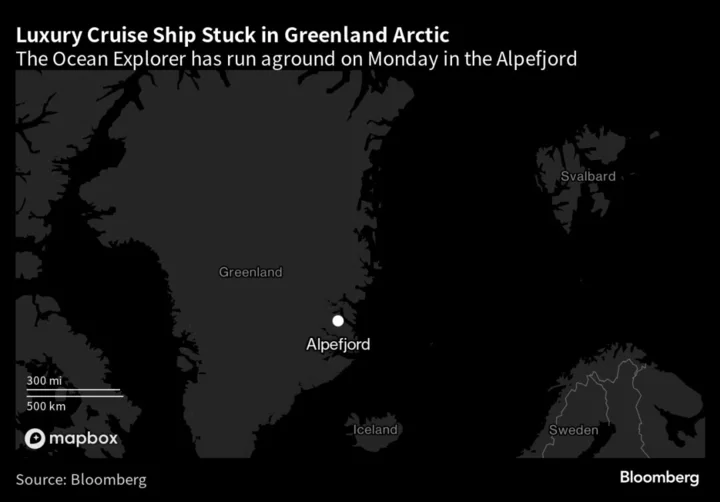Even record dividends aren’t tempting investors enough to bet on stocks they see as more vulnerable in a recession.
Big payers in the energy, mining and financial sectors have trailed the market this year as investors rotated away from cyclicals into defensive and growth sectors. That’s made dividend yield among the worst-performing investing factors in Europe and the US, according to data compiled by Bloomberg.
Risks of a recession are rising in Europe and the US, with the timing of a peak in central banks’ rate-hike campaigns hotly debated. Companies with robust balance sheets, profit growth and potential for expansion have found favor, while there’s uncertainty about whether dividend aristocrats can maintain their largesse in leaner times. Recent banking turmoil has also made traders wary of financials.
The concern is “how sustainable is the growth for those businesses that are exhibiting high dividends,” Luke Barrs, managing director and global head of fundamental equity client portfolio management at Goldman Sachs Asset Management, said in a phone interview. While a dividend is a very valuable asset, “the only way you sustain that over time is if you continue to grow the underlying earnings within the business,” he added.
Global dividends jumped 12% on a headline basis to a record $327 billion in the first quarter, boosted by special one-off payments, according to Janus Henderson Investors. And European companies are on track for the biggest ever annual payouts, with the amount for the Stoxx Europe 600 Index expected to top €400 billion ($432 billion) in 2023, Bloomberg dividend forecasts show.
Still, some warning signs are emerging. In mining, a sector known for strong payouts, falling metal prices and an uneven recovery in China have been drags — giants BHP Group Ltd. and Rio Tinto Plc both cut their dividends earlier this year. Among others, sportswear firm Adidas AG lowered payouts, while the Swedish real estate company commonly known as SBB halted dividends, flagging turmoil in the sector.
Global mining dividends fell by a fifth in the first quarter, according to Janus Henderson. Banks and oil producers, on the other hand, were the biggest contributors to payout growth.
Regionally, Europe looks strong for now. In a gauge of companies tracked by Janus Henderson, 96% raised payouts or held them steady in the first three months of the year. And the firm expects dividends to grow further in the second quarter.
Stephen Payne, a portfolio manager on Janus Henderson’s global equity income team, said this year’s underperformance in dividend payers is primarily due to the rotation into growth and tech stocks as traders bet on a rates peak, rather than because of any underlying issues with dividend stocks. He sees the strategy coming back into favor if the US and Europe manage to avoid a recession this year.
Dividend strategies tend to outperform in the long run, proving particularly strong during bull runs. They beat the broader market by wide margins during 2009-2011 and again between 2018 and 2020.
“Some of those high dividend yield sectors are relatively cyclical. So as the market’s become a bit more cautious around cyclical exposure, that plays into that factor differential,” Payne said in a phone interview. “I think the dividend strategies’ attraction remains and that you will see interest in those areas, definitely.”
European stocks slumped on Wednesday, led by cyclical sectors such as travel and leisure, banks and automakers, as the US debt-ceiling talks dragged on and a wave of Covid infections in China weighed on sentiment. US futures were slightly lower.
--With assistance from Dorin Ursu.
(Updates with Wednesday’s move in stocks in final paragraph.)









